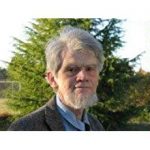 If you have been around older people, perhaps your parents or grandparents, you may have noticed that as they got older, it took them a little longer to dredge up the precise word they needed to express a thought, or to remember the name of a person, a place, or perhaps the title of a book that they wanted to recommend to you. Even in the absence of any of the recognized dementias, older people gradually lose some of the cognitive ability that they had at younger ages.
If you have been around older people, perhaps your parents or grandparents, you may have noticed that as they got older, it took them a little longer to dredge up the precise word they needed to express a thought, or to remember the name of a person, a place, or perhaps the title of a book that they wanted to recommend to you. Even in the absence of any of the recognized dementias, older people gradually lose some of the cognitive ability that they had at younger ages.
For a long time, people didn’t wonder why this was so: they just considered it the natural order of things. The brain is part of the body, and aging exacts a toll on other parts of the body as well. In recent years, researchers have started to question the supposed inevitability of the decline in health that accompanies aging.
 I talked about some recent research on this here. Irena Conboy’s lab surgically joined the circulatory system of a young mouse to that of an old mouse and let them share blood. The result was that the older mouse started exhibiting characteristics of a younger mouse, while the younger mouse started looking older. This is not something that you would ever do with people but it does suggest that either there is a youth factor in the young blood that is rejuvenating the old mouse by replacing something that disappeared gradually as the old mouse aged, or that there is an aging factor in the blood of the old mouse that has a detrimental affect on the young mouse. Or perhaps both things are happening.
I talked about some recent research on this here. Irena Conboy’s lab surgically joined the circulatory system of a young mouse to that of an old mouse and let them share blood. The result was that the older mouse started exhibiting characteristics of a younger mouse, while the younger mouse started looking older. This is not something that you would ever do with people but it does suggest that either there is a youth factor in the young blood that is rejuvenating the old mouse by replacing something that disappeared gradually as the old mouse aged, or that there is an aging factor in the blood of the old mouse that has a detrimental affect on the young mouse. Or perhaps both things are happening.
Saul Villeda’s lab at the University of California at San Francisco has extended the heterochronic parabiosis work in an interesting direction. What they did, did not involve surgically connecting a young mouse to an old mouse. Instead they maintained three separate groups of mice that shared a common genetic makeup. One group was young and the other two groups were the same age and were old.
The young mice and one group of elderly mice were caused to run a lot over a six-week period. The other group of elderly mice were forced to lead a sedentary existence for six weeks. Next, blood from young exercisers was transferred into some sedentary mice, and blood from elderly exercisers was transferred into the rest of the sedentary mice. The sedentary mice that had received blood from either the young or the elderly exercised mice performed better on cognitive tests than control mice, and new neurons were created in the memory centers of their brains. Something in the blood of the exercisers was rejuvenating the brains of the sedentary mice, regardless of whether the source of that blood was a young or an elderly mouse.
Digging deeper, the researchers found that the blood of the exercisers had an elevated level of a protein known as GPLD1, which is produced by the liver. They then used genetic engineering to amplify GPLD1 production in the livers of elderly, sedentary mice. Sure enough, these animals performed almost like young mice on learning and memory tasks. Their brains also grew many more newborn neurons than similar mice that had not received the treatment. The sedentary mice had received the benefits of exercising, without having to exercise.
GPLD1 could be a substance that people could take to rejuvenate their brains. Or maybe not. Mice are not people, and often a therapy that works with mice does not work with people. However, most people can exercise. This boosts the production of GPLD1 naturally rather than through something you ingest, such as a pill or infusion. Much work has shown that exercise seems to preserve cognition. GPLD1 could be the reason for this, although more work is needed to nail down all the relevant factors.
If you would like to preserve your cognitive abilities as long as possible, consider engaging in a program of regular exercise. My preferred exercise is running, which is also how the mice exercise. Humans have more choices. The important thing is to do something, and to be consistent about it.
BIO:
Allen G. Taylor is a 40-year veteran of the computer industry and the author of over 40 books, including Develop Microsoft HoloLens Apps Now, Get Fit with Apple Watch, Cruise for Free, SQL For Dummies, 9th Edition, Crystal Reports 2008 For Dummies, Database Development For Dummies, Access Power Programming with VBA, and SQL All-In-One For Dummies, Third Edition. He lectures internationally on astronomy, databases, innovation, and entrepreneurship. He also teaches database development and Crystal Reports through a leading online education provider. For the latest news on Allen’s activities, check out his blog at wwwallengtaylor.com or contact him at allen.taylor@ieee.org.